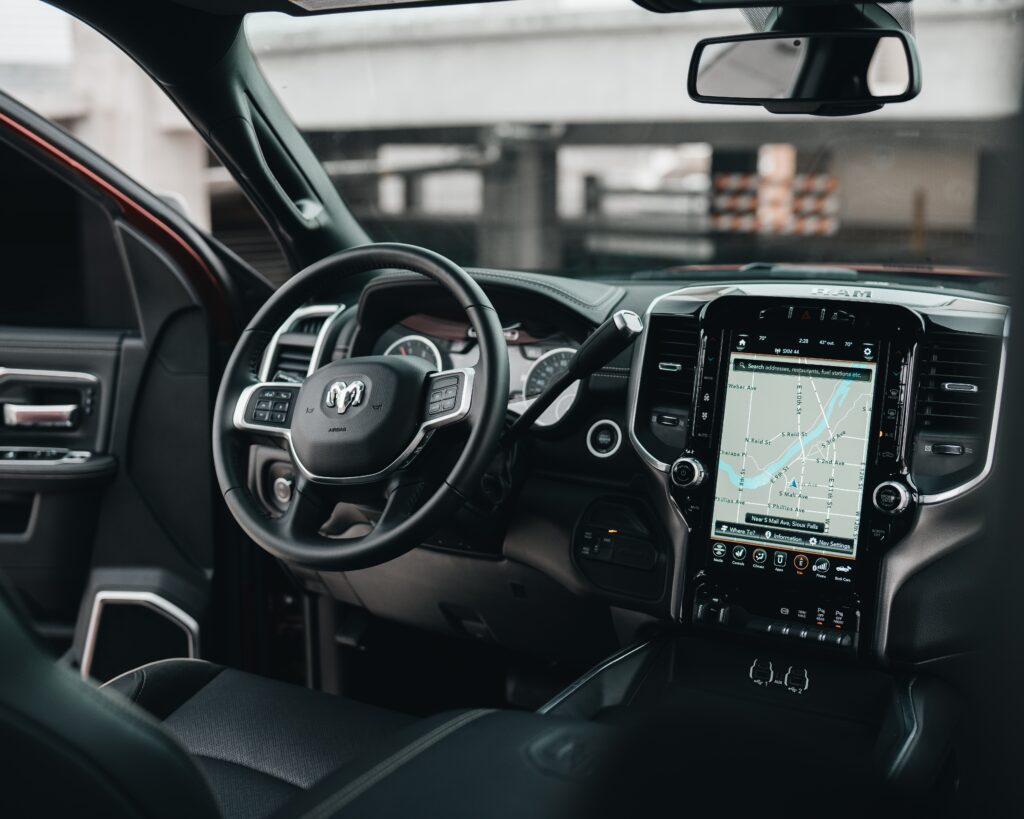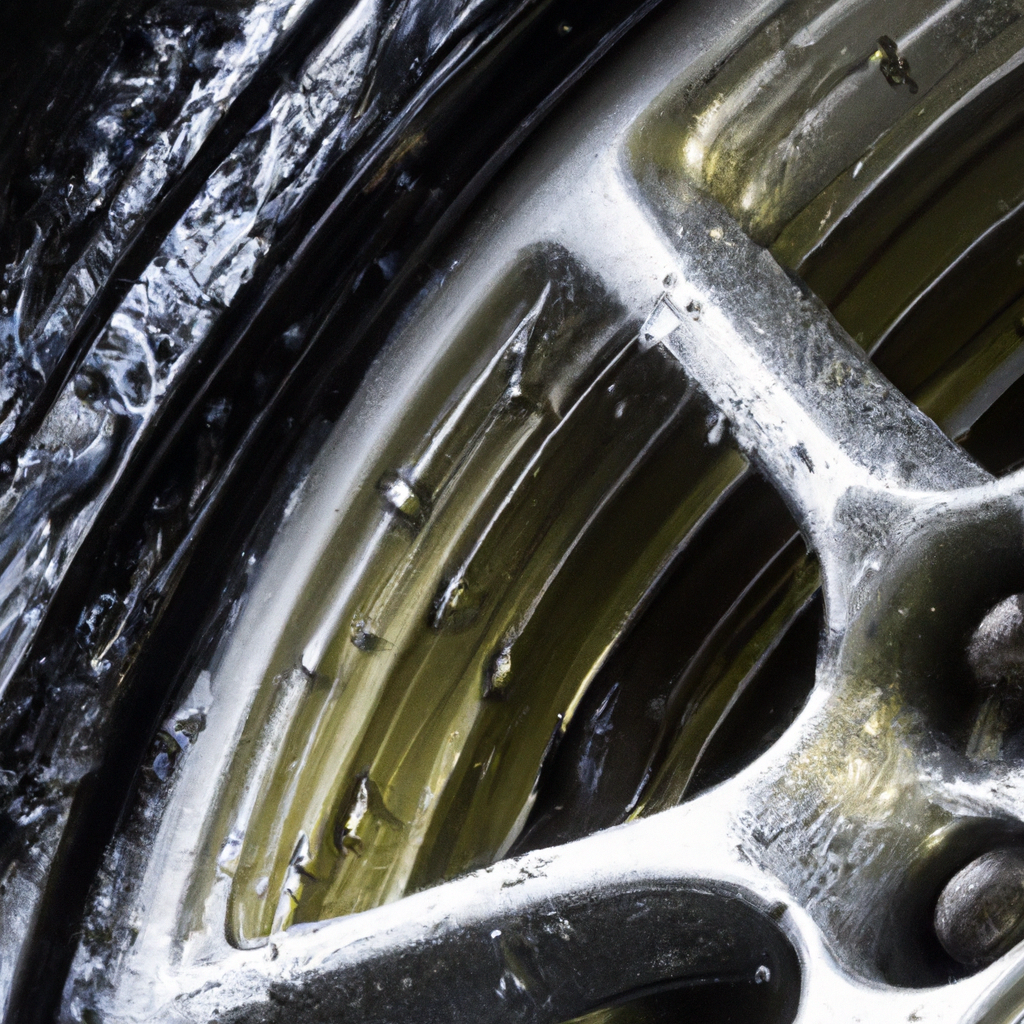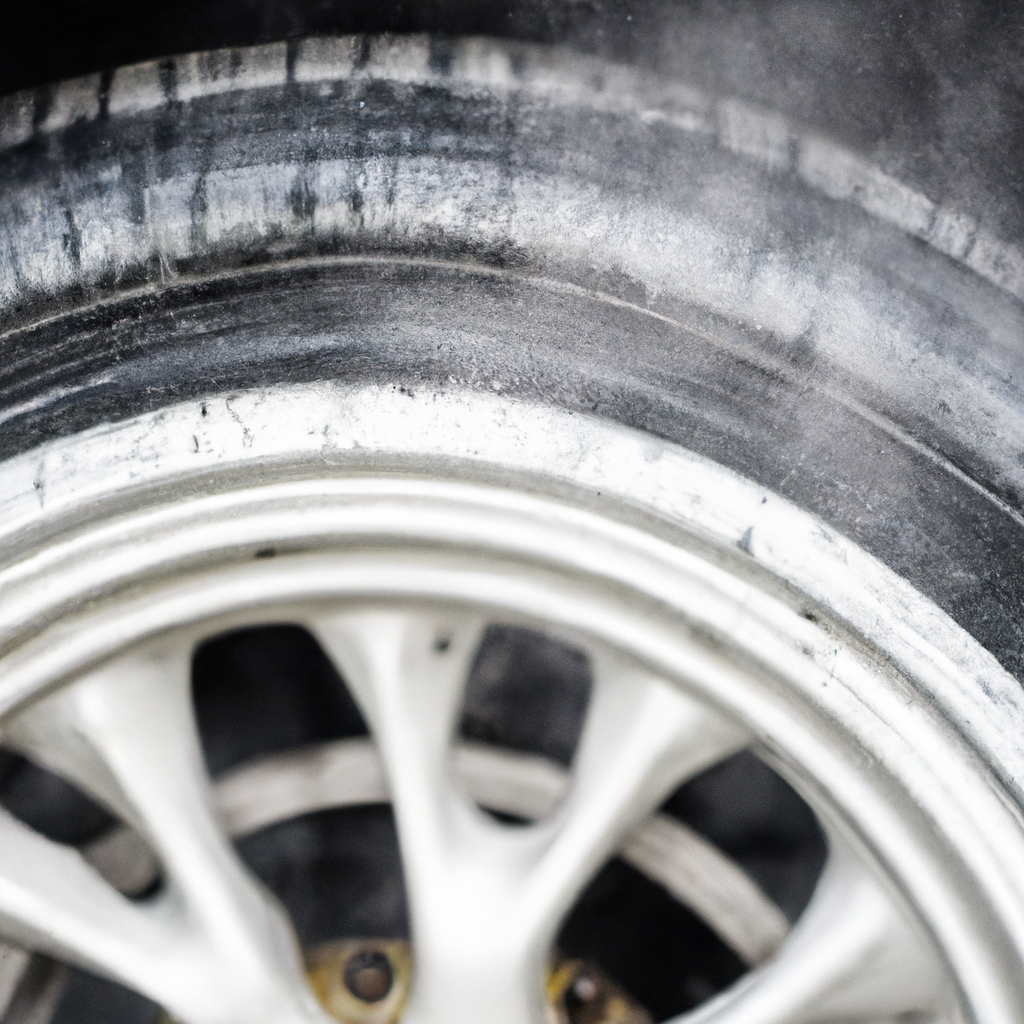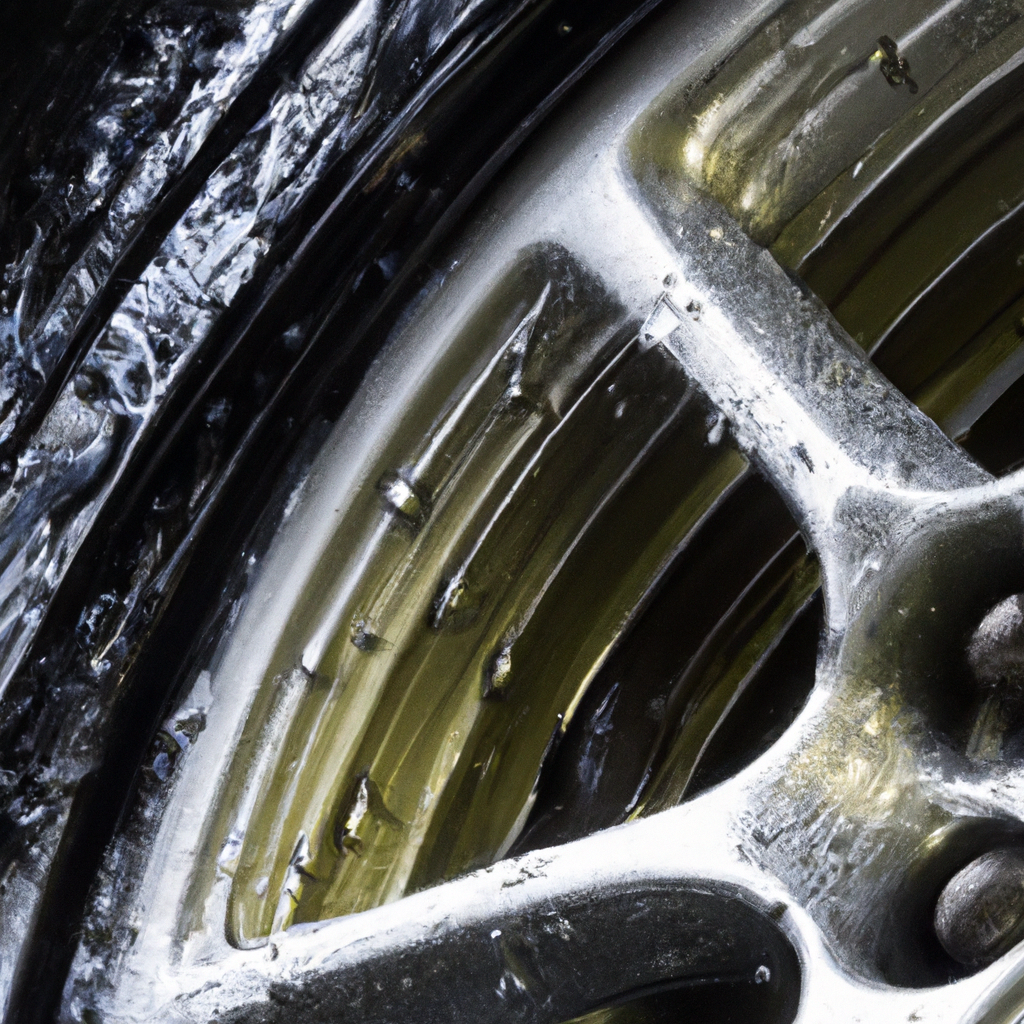If you’re a car enthusiast or someone who takes pride in keeping their wheels pristine, you may be wondering about the potential damage that high-pressure washers can inflict on your beloved wheel finishes. From the sparkling shimmer of polished alloys to the glossy layer of paint on your wheels, we all want to maintain their shine. In this article, we’ll explore the impact of high-pressure washers on wheel finishes and provide you with some valuable insights to help you make an informed decision when it comes to cleaning your wheels effectively and safely. So, let’s set those concerns aside and explore the world of high-pressure washers and wheel finishes!

Understanding high-pressure washers
High-pressure washers, also known as power washers, are tools that use high-pressure water to remove dirt, grime, and other substances from various surfaces. They are commonly used for cleaning outdoor areas such as decks, driveways, and vehicles, including wheels. High-pressure washers operate by forcing water through a narrow nozzle at a high velocity, creating a powerful stream of water that can effectively remove tough stains and debris.
How do high-pressure washers work?
High-pressure washers work by creating a high-pressure stream of water that can be adjusted to different levels of pressure. They are typically powered by an electric motor or a gas engine, which drives a pump that pressurizes water from a garden hose or a water source. The pressurized water then flows through a hose and out of a nozzle at high speed. The narrow opening of the nozzle increases the water’s velocity, providing a powerful cleaning force when directed at a surface.
Common uses of high-pressure washers
High-pressure washers have a wide range of applications due to their versatility and effectiveness in cleaning. They are commonly used for cleaning outdoor surfaces such as driveways, sidewalks, and patios, as well as vehicles including cars, motorcycles, and bicycles. When it comes to wheels, high-pressure washers are often used to remove built-up brake dust, road grime, and other contaminants that can accumulate over time. They provide a quick and efficient way to restore the appearance of wheels and enhance their overall cleanliness.
The impact of high-pressure washers on wheel finishes
While high-pressure washers can be incredibly useful for cleaning wheels, they can also potentially cause damage to certain types of wheel finishes. Understanding the effects of high-pressure water on different wheel finishes and the potential risks involved is essential to maintaining the longevity and appearance of your wheels.

Effects of high-pressure water on different wheel finishes
Different wheel finishes may react differently to high-pressure water, depending on their surface characteristics and durability. Here are some common effects of high-pressure water on different wheel finishes:
Painted finishes
For wheels with painted finishes, high-pressure water can cause the paint to chip, peel, or fade over time. The force of the water can be too abrasive for the delicate surface of the paint, leading to potential damage.
Polished finishes
High-pressure water can have a similar abrasive effect on wheels with polished finishes. It can create micro-scratches or remove the reflective shine, diminishing the overall appearance.
Chrome finishes
While chrome finishes are generally more durable, high-pressure water can still cause damage. Over time, the force of the water can erode the protective chrome layer, leading to pitting or corrosion.
Powder-coated finishes
Powder-coated finishes are typically more resilient to high-pressure water compared to other types of finishes. However, if the powder coating is already damaged or compromised, the water’s force can worsen the condition and potentially lead to further issues.
Anodized finishes
Anodized finishes are commonly found on aluminum wheels and offer excellent resistance to corrosion. However, high-pressure water can still have a negative impact on anodized finishes, causing discoloration or dulling of the surface.
Potential risks of using high-pressure washers on wheel finishes
While high-pressure washers can effectively remove dirt and grime from wheels, there are some potential risks associated with their use:
Damage to the finish
As discussed earlier, high-pressure water can damage certain wheel finishes, such as painted or polished surfaces. It is essential to be mindful of the water pressure, nozzle type, and proximity to the wheels to avoid causing any irreversible damage.
Water intrusion
High-pressure water can force its way into small crevices or gaps in the wheels, such as the areas between spokes or lug nuts. This can lead to water intrusion, which may cause corrosion or rust over time if not properly dried or treated.
Degradation of wheel components
The force of high-pressure water can also impact the integrity of other wheel components, such as valve stems or wheel weights. If these components are not adequately secured or protected, they can be dislodged or damaged by the water stream.
Personal safety risks
Using a high-pressure washer incorrectly or without proper precautions can pose personal safety risks. The powerful water stream can cause injuries if directed towards the body or eyes. It is important to always wear protective gear, such as safety goggles and gloves, and follow the manufacturer’s instructions.

Different types of wheel finishes
When it comes to wheel finishes, there are several common types that you may encounter. Understanding these finishes can help you determine the best approach when using a high-pressure washer on your wheels.
Painted finishes
Painted finishes are one of the most common wheel finishes and can come in a variety of colors and designs. They provide a smooth and glossy appearance to the wheels, enhancing their overall aesthetic.
Polished finishes
Polished finishes are characterized by their reflective and mirror-like appearance. They are achieved through a process of buffing and polishing the wheel surface to a high shine.
Chrome finishes
Chrome finishes are highly lustrous and have a mirror-like appearance. They are created by electroplating a thin layer of chromium onto the wheel’s surface, providing both aesthetic appeal and corrosion resistance.
Powder-coated finishes
Powder-coated finishes involve applying a dry powder coating to the wheel’s surface, which is then cured under heat to form a durable and protective layer. They are known for their resistance to chipping, fading, and corrosion.
Anodized finishes
Anodized finishes are primarily used on aluminum wheels and involve an electrochemical process that thickens the natural oxide layer on the surface. This creates a durable, corrosion-resistant finish that can be colored or left with a natural metallic appearance.
Factors to consider
When using a high-pressure washer on your wheels, several factors should be taken into consideration to minimize the risk of damage and achieve optimal cleaning results.
Water pressure
The water pressure setting on the high-pressure washer plays a crucial role in preventing damage to wheel finishes. It is important to adjust the pressure according to the specific type of finish and follow manufacturer guidelines.
Water temperature
In general, using cold water is recommended for cleaning wheels. Hot water can accelerate chemical reactions or cause thermal shock, potentially damaging certain finishes or wheel components. However, if your high-pressure washer has a temperature control feature, make sure to use warm water within a safe temperature range.
Nozzle type
The type of nozzle you use can have a significant impact on the effectiveness and safety of the high-pressure washer. A wide-angle or fan nozzle provides a broader spray pattern, which is less likely to concentrate the water’s force on a single point, reducing the risk of damage.
Proximity to the wheels
Maintaining an appropriate distance between the nozzle and the wheels is essential to prevent damage. Holding the nozzle too close to the wheel surface increases the water’s pressure and potentially causes harm. Aim for a distance of about 6-12 inches and adjust as necessary.

Benefits and drawbacks of using high-pressure washers
While high-pressure washers offer several benefits for cleaning wheels, it is important to weigh them against any potential drawbacks.
Benefits of using high-pressure washers
- Efficient and time-saving: High-pressure washers can quickly remove dirt, grime, and brake dust from wheels, reducing the time and effort required for manual cleaning.
- Effective for tough stains: The high-pressure water stream can effectively remove stubborn stains that may be difficult to tackle with other cleaning methods.
- Versatile: High-pressure washers can be used on a variety of surfaces, making them a versatile tool for all your cleaning needs.
Drawbacks of using high-pressure washers
- Potential for damage: As discussed earlier, high-pressure washers can potentially cause damage to certain wheel finishes if used incorrectly or with excessive force.
- Water and energy consumption: High-pressure washers can consume a significant amount of water and energy, which may not be ideal for those striving to reduce their environmental footprint.
- Personal safety risks: Mishandling a high-pressure washer can pose personal safety risks, such as injuries from the powerful water stream. It is essential to follow safety guidelines and exercise caution when using the tool.
Best practices for using high-pressure washers on wheels
To minimize the risks and optimize the benefits of using high-pressure washers on your wheels, here are some best practices to follow:
Choosing the appropriate pressure
Start with the lowest water pressure setting and gradually increase as needed. Different wheel finishes may require different pressure levels, so it is essential to refer to manufacturer guidelines or seek professional advice if uncertain.
Using the correct nozzle
Choose a wide-angle or fan nozzle to distribute the water evenly and minimize the risk of concentrated pressure on a single point. Avoid using a narrow or pinpoint nozzle, as it can increase the likelihood of damage.
Maintaining a safe distance
Keep the nozzle at a safe distance from the wheel surface, typically around 6-12 inches. This distance ensures that the water pressure is in an optimal range and reduces the risk of damage.
Avoiding high-pressure on sensitive areas
Be cautious around sensitive areas, such as valve stems, wheel weights, or any other components that may be easily dislodged or damaged. Adjust the angle of the water stream to avoid directing high-pressure water towards these areas.
Drying methods
After using a high-pressure washer, thoroughly dry your wheels to prevent water intrusion or the formation of water spots. Use a microfiber cloth or soft towel to absorb moisture and ensure all areas of the wheel are adequately dried.

Preventing damage to wheel finishes
Taking proactive measures to prevent damage to wheel finishes can help maintain their appearance and prolong their lifespan. Here are some preventive measures:
Regular maintenance
Regularly clean your wheels using appropriate cleaning methods, such as gentle handwashing or low-pressure washers. This can help prevent excessive buildup of dirt, grime, or brake dust, which can be more challenging to remove with a high-pressure washer.
Protective measures
Consider applying a protective coating or sealant to your wheels. This can provide an additional layer of protection against water, contaminants, and other environmental factors.
Avoiding harsh chemicals
When cleaning your wheels, avoid using harsh chemicals or cleaners that can potentially damage the finishes. Opt for mild, pH-neutral cleaners that are safe for the specific type of finish you have.
Handwashing alternatives
If you are concerned about using a high-pressure washer on your wheels, consider using alternative cleaning methods, such as gentle handwashing with a soft brush or sponge. This allows for better control over the cleaning process and reduces the risk of damage.
Professional cleaning services
If you are unsure about how to properly clean your wheels or want to ensure the best results without the risk of damage, consider seeking professional cleaning services. Professional detailers have the knowledge, experience, and equipment to safely and effectively clean your wheels, preserving their finishes.
Alternative cleaning methods
While high-pressure washers are a popular choice for cleaning wheels, there are several alternative methods that can achieve similar results without the potential risks.
Using low-pressure washers
Low-pressure washers, also known as garden sprayers or foam cannons, provide a gentler alternative to high-pressure washers. They use a diluted cleaning solution and a wider spray pattern to effectively clean wheels without the risk of high-pressure damage.
Handwashing techniques
Handwashing your wheels with a soft brush or sponge allows for precise control and reduces the risk of damage. This method is particularly suitable for delicate finishes or wheels with intricate designs that may be challenging to clean with a high-pressure washer.
Brush and bucket method
The brush and bucket method involves using a specialized wheel brush and a bucket of soapy water. Dip the brush in the bucket, gently scrub the wheel surface, and rinse with clean water. This traditional method provides excellent control and minimizes the risk of damage.
Wheel cleaning sprays
There are various wheel cleaning sprays available on the market that are specifically formulated to remove brake dust and road grime. These sprays can be applied to the wheel surface, left to dwell for a few minutes, and then rinsed off with water. They offer a convenient and less abrasive alternative to high-pressure washers.
Repairing damaged wheel finishes
In some cases, wheel finishes may already be damaged or exhibit signs of wear and tear. If this occurs, there are a few options for repairing the damage.
DIY solutions
For minor damage, such as small scratches or scuffs, there are DIY solutions available. These may include touch-up paint for painted finishes, metal polish for polished finishes, or chrome restoration kits for chrome finishes. Follow the manufacturer’s instructions carefully and take appropriate safety measures.
Seeking professional assistance
For more extensive damage or if you are unsure about the appropriate repair method, it is recommended to seek professional assistance. Professional wheel repair specialists can assess the damage and provide the necessary repairs or refinishing to restore the wheel’s appearance.
Conclusion
High-pressure washers can be a valuable tool for cleaning wheels, providing efficient and effective results. However, it is important to understand the potential risks and take appropriate precautions to prevent damage to wheel finishes. By considering factors such as water pressure, nozzle type, proximity to the wheels, and alternative cleaning methods, you can ensure the longevity and appearance of your wheels while enjoying the convenience of high-pressure washers. Remember to always refer to manufacturer guidelines and seek professional assistance when needed to maintain the optimal condition of your wheels.

